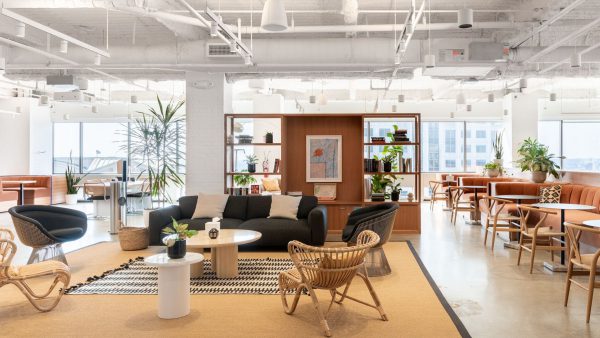The role of the office is in flux. Here are four ways CRE brokers, tenant reps, owners and managers are leveraging Upflex to help occupiers manage change.
The business landscape is undeniably volatile. Between COVID-19, the Great Resignation, and the ongoing supply chain crisis, companies are seeking new and innovative ways to future proof their workplace strategy against such unpredictable — and disruptive — events in the future.
Occupier clients are finding basic workplace strategy questions hard to answer: What space will we need in the next 10 years? How should it be configured? What will our staffing levels be? What trends will emerge when it comes to employee experience?
So many of these issues are now unusually opaque, urging companies to focus on flexibility, fluidity and adaptability in lieu of more rigid next steps. Here are a few of the challenges facing CRE occupiers today — and the ways Upflex is helping them brace for and manage change.
1. Riding peaks and valleys with scalability
Office space is typically the second-biggest cost for organizations and, as of June 2022, the average occupancy rate in ten major U.S. metro areas was 44%, down from more than 95% before the COVID-19 pandemic began. However, some companies are experiencing exponential growth that forces them out of static office space ahead of their lease expiration.
Occupiers looking to scale up need solutions that are agile, responsive, and low-commitment.
2. Considering a smaller — or different — post-COVID office
Meanwhile, other companies are downsizing. About 17.5% of office space across the country wasn’t leased at the end of the second quarter 2022. About 52% of companies expect to shrink their office space over the next three years, up from 44% a year earlier.
Over half of large employers have reduced their real estate footprint since the beginning of the pandemic and 28% aim to reduce their portfolio by up to 10% in the next two years.

White-labeling Upflex’s technology and network, CRE brokerages and large-scale space operators are helping occupiers transition to convenient, cost-effective, global flex workspace strategies. Learn more.
But, employees still need connected, comfortable workspace — causing companies to increasingly explore downsizing their headquarters but supplementing their space strategy with “third place” workspace.
3. Insulation from rising construction costs and the supply chain crisis
Most companies hit “pause” on any planned workplace strategy transformation initiatives during the COVID-19 pandemic, such as building new headquarters or renovating existing office spaces. Now that occupiers are emerging from the pandemic, there is a new set of challenges for any construction project: unprecedented construction costs. The costs of construction are the highest they have been in more than 50 years. Construction costs went up by 17.5% year-over-year from 2020 to 2021, the largest spike in this data from year to year since 1970. Costs from 2021 were also more than 23% higher than pre-pandemic 2019.
Meanwhile, COVID-19’s impact on our global supply chain — and, as a result, on availability and cost of construction materials — is undeniable. Contractors are now only guaranteeing prices for seven days, an unprecedented truncation of industry standards, revealing the inherent volatility of the construction market.
How CRE professionals are leveraging Upflex
With Upflex, all of these issues are rendered obsolete. A powerful workspace platform connecting brokers, owners and operators, and occupiers into one cooperative, tech-enabled ecosystem, Upflex enables CRE professionals to offer innovative products and solutions to occupiers — all with the goal of future-proofing their workplaces.
When they need to quickly accommodate peaks and valleys in workplace needs, or rapid growth into new markets, Upflex’s network gives them access to some of the world’s best workspace, without long-term commitments or large up-front costs — and without the risk or cost of committing to a long-term workplace strategy that hinges on new, costly physical offices and renovations.
With Upflex, occupiers can eliminate the costs of underutilized office space, and mitigate the inherent risk and uncertainty of typical real estate decisions. And, they get the financial flexibility they need in order to stay lean and ready — no matter what the future holds.



